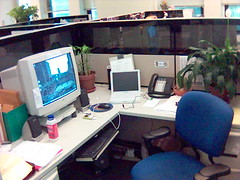
We read articles on Techcrunch everyday of new companies getting huge investments for their next breakthrough product. We dream that one day our own ideas can attract that much excitement (and investment). So what are your funding options for starting an online business?
1. Borrow from people you know.
Ah yes, borrow from the three Fs – friends, family and fools! I have done this a couple of times, with three different projects. I had friends who had money, but no ideas. I had tons of ideas but no money. It was a match made in heaven!
Make sure you have a backup plan if things don’t go according to plan (which they rarely do). Your relationships should come first – so find a way to pay them back, if things don’t work out.
2. Borrow from people you don’t know.
This would of course be third party investment from angel investors or venture capitalists. There would have to be some particular reason for them to invest in you though. You may have the greatest idea in the world, but investors prefer to see the ability to execute first. You could show them this ability to execute by doing any of the following:
- Have previous experience in startups. Of course this becomes a chicken and egg situation – how do you have experience if they won’t give you the funding first? Maybe try option 1 or 3 for your first few projects then, before coming to option 2.
- Have a great education from a name brand university. One benefit of graduating from a good university is the connections that come along with it. If you’re fortunate enough to have these connections, make use of them!
- Win a contest! Join a startup weekend – go through the process and see what happens. You’ll be able to make great connections, and even form a team of talented people willing to help you. Heck, if you’re good enough and lucky enough, you may even win.
3. Bootstrap:
Bootstrapping refers to starting a business on your own, without any external help. Just tap into that huge trust fund you have, and you’ll be all set!
What, you don’t have a trust fund?! In that case, you’re in even better shape! One of the benefits of bootstrapping is that you learn quickly to make your business profitable, since it’s the only way it’ll survive otherwise.
Figure out the cheapest, viable way to get your business started. Reinvest any profits back into the business to keep improving it. Raise prices as you raise the quality of your product. Lather, rinse and repeat.
I’ve done this over and over with projects that look big and complicated today, but which started off as tiny projects, with incremental improvements over time.
Bootstrapping lets you prove your business worth to yourself and others. Start with $100 and see if you can turn that into $200. Then move up to $1000 and see if you can turn that into $2000. Then work your way up to $10 000, $100 000 and later a million dollars!
Bootstrapping will take you through the school of hard knocks. The pressure is all on you to perform. The buck stops with you. Can you motivate yourself to succeed? If you can’t, then how do you expect to lead a larger team later on?
If you fail, then figure out your mistakes and start again on a new project, until you can succeed. No sense in moving to the next grade, if you can’t pass your current one.
Work your Way Up
In my short business career, I started with bootstrapping my first site, then later my own apps. This experience gave me the courage to get friends to invest in me on bigger projects. From there, I moved on to Startup Weekend, which the team I led recently won. We are now working on a project that would be my biggest to date.
Every journey begins with the first step. So don’t fret if the end seems so far away. Work your way up. Enjoy the process. Enjoy the scenery. Make lots of friends. You may need to borrow money from them later.

 You have done your market research and found the demand. You have now created a product to solve this demand. So what should you price it at?
You have done your market research and found the demand. You have now created a product to solve this demand. So what should you price it at?




